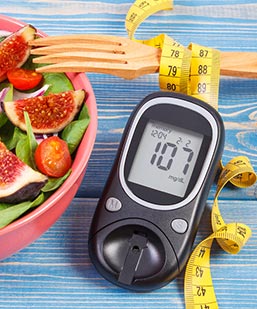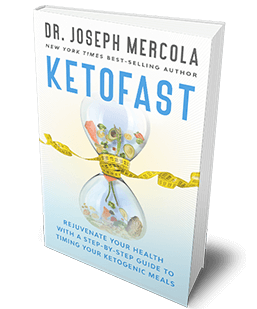Forty-Two Days Without Food: How One Doctor’s Desire to Die Revealed Fasting’s Supreme Benefits for Life
 Henry S. Tanner. M.D. after 14 days of his 42-day fast
Henry S. Tanner. M.D. after 14 days of his 42-day fastHenry Tanner, M.D., a respected, middle-aged physician from Duluth, Minnesota had reached the point in his life where he no longer wanted to live.
Spending his waking hours in pain, he had suffered from rheumatism, asthma and disrupted sleep for years.
All the doctors he consulted considered his case “hopeless”.
Back in those days in medical school, Tanner learned that the human body could survive without food for only 10 days. With that fact in mind, he created his “death plan”.
He would simply stop eating and at the end of 10 days his misery would be over.
But, to his amazement, his intentions didn’t go as planned...
By the fifth day of his fast, Tanner was sleeping more peacefully. And instead of dying by day 10, he felt as well as he did in his youthful days.
Continuing to fast until day 42 – and by now under a fellow physician’s supervision – Tanner surprised himself and proved his naysayers wrong. His symptoms of rheumatism, asthma and chronic pain were gone.
Dr. Tanner went on to living a full life until he died at age 90.
Another Fad Diet... or a Healing Mechanism Already Woven into Your DNA?
You may believe that fasting is just another fad diet. If so, you’re in good company. Many people do.
However, fasting is one of the oldest dietary interventions in the world. As old as humans have been around, fasting played a crucial role in our early survival.
Since the beginning of our species – and up until only about 150 years ago – humans have not had consistent access to food. Unpredictable food access forced the human race to become metabolically flexible.
That is, they could produce ketones from fat when glucose supplies ran low. The ability to enter this fat-burning state, known as ketosis, allowed our species to survive without fat.
Now, when you fast, you participate in an activity that’s woven into your DNA.
Fasting for better health has been heralded by ancient healers and scholars for thousands of years. Consider these quotes...
“Everyone has a doctor in him; we just have to help him in his work. The natural healing force within each one of us is the greatest force in getting well. To eat when you are sick is to feed your sickness.” - Hippocrates
“I fast for greater physical and mental efficiency.” - Plato
“A little starvation can really do more for the average sick man than can the best medicines and the best doctors.” - Mark Twain
The best of all medicines is resting and fasting.” - Benjamin Franklin
“Fasting is the greatest remedy – the physician within.” - Philippus Paracelsus
Clearly, fasting allowed Dr. Tanner’s body to heal itself. Prior to his “death plan” fast, he had given up all hope for recovery from Western medicine.
Fasting Lowers Your Insulin Levels More Powerfully Than Any Other Known Strategy
 Insulin resistance and higher levels of insulin in your body can keep you locked in fat-storing mode.
Insulin resistance and higher levels of insulin in your body can keep you locked in fat-storing mode.But you may be wondering... were Tanner’s results a fluke? Can dramatic results such as his be duplicated with a simple fast?
Dr. Jason Fung, co-author of The Complete Guide to Fasting and a kidney specialist in Canada, recently published results from a case report in which he used a modified type of fasting to reverse insulin resistance and actually resolve Type 2 diabetes for three patients who were all on insulin and had diabetes for as long as 25 years.
As I revealed earlier, it’s estimated that at least 80 percent of Americans are insulin resistant. One side effect of insulin resistance is weight gain.
With insulin resistance, you have higher levels of insulin. Your body responds by storing energy as fat and stays locked in fat-storing mode as your cells become desensitized.
How can you break out of this self-defeating cycle?
When you take a break from eating, your blood glucose and insulin levels drop. And when your insulin levels fall, your body starts burning your fat stores. Fasting lowers insulin more powerfully than any other strategy we know of.
That’s not all... Your insulin receptors regain their sensitivity so your body can use less insulin to maintain healthy blood glucose levels.
A win-win in every aspect, just by giving your digestive system a brief pause...
How Round-the-Clock Eating Puts Your Health at Risk
 Americans indulge in as many as 15.5 separate eating events in a typical day
Americans indulge in as many as 15.5 separate eating events in a typical dayMost of us eat too much food, and too often.
In fact, the vast majority of Americans eat all day long – engaging in as many as 15.5 separate eating events from the time they wake up until they go to bed! And 90 percent eat for more than 12 hours a day.
Many also consume a big chunk of their daily calories after 6:00 p.m., exactly when your body requires the least amount of energy from food.
So what’s so bad about this round-the-clock eating habit and especially eating within three hours of going to sleep?
- Your risk for inflammation, hypertension and cardiovascular disease rises.
- Your digestive system doesn’t get enough time to effectively digest your food and to eliminate waste.
- Your body’s natural housekeeping and rejuvenation processes can’t take place because you are in “digest” mode.
- You rarely, if ever, empty your glycogen stores, or the sugar stored in your liver.
- You load your body with energy when it doesn’t need it, and it often ends up being stored as fat.
- Your cells’ DNA, mitochondria, membranes and proteins can be harmed by the excess free radicals created by the unused, inefficiently-burning fuel.
- Your cells’ resistance to stress and disease, including cancer, declines.
One of the most important benefits of my step-by-step plan helps eliminate these potential side effects. It supports your body’s ability to cleanse and detoxify itself while using its fuel most efficiently.


Another Profound Benefit of Fasting... Autophagy or the “Roto-Rooter” for Your Cells
 Autophagy naturally clears out the harmful proteins in your brain that can contribute to Alzheimer’s..
Autophagy naturally clears out the harmful proteins in your brain that can contribute to Alzheimer’s..Another magnificent healing mechanism that fasting triggers is autophagy, or the process by which your body clears away and digests its own damaged cells.
Autophagy is derived from the Greek words meaning “self-eating.”
It’s like taking out the trash... This vital cleanout process detoxifies your cells and recycles the parts that are no longer needed. Autophagy also destroys foreign invaders such as viruses, bacteria, and other pathogens.
However, autophagy slows down with age and that slowing can contribute to diseases such as Alzheimer’s and Parkinson’s.
When activated, autophagy naturally clears out harmful proteins, radically improving your cells’ ability to function properly.
There may be multiple ways to boost autophagy, but none compare to fasting. When you allow your body to go without food, your cells trigger your innate autophagy switch.
This allows your body to adapt to the lack of food and still meet your body’s energy needs. When you take it to the next step (as I outline in my step-by-step guide), you boost your growth hormone and the building of new proteins and cells.
In other words, you speed up your body’s natural renewal cycle and allow your cells to behave more youthfully.
Be Aware... As Beneficial Fasting May Be to Your Health, It Comes with Some Serious Perils
 One drawback of multi-day water fasts is that you only receive benefits every few months.
One drawback of multi-day water fasts is that you only receive benefits every few months.As I dove into the topic of fasting and collaborated with researchers and clinicians investigating and implementing it with patients, I discovered some disturbing trends.
While true fasts – where you consume only water and no solid food for a specific period of time – did indeed offer some profound health benefits, I found there were major drawbacks, too.
One of the biggest downsides is that most healthy people can only do multi-day water fasts a few times a year. So they will only receive fasting’s fantastic benefits every few months.
On the other hand, the version of fasting I’m about to introduce you to – KetoFasting – is so easy you can comfortably fit it into your schedule once or twice a week and get far more fasting benefits that will repair and regenerate your body year-round.
I personally have been doing it twice a week for some time now and really enjoy it.
The reason why KetoFasting is easy for most is because you become metabolically flexible before you start that final step. This way you can easily burn fat for fuel and not have any fatigue or brain fog when you do it.
It’s much healthier for your cells – and your entire body – to produce ketones so you can burn fat for your body’s fuel. My book Fat for Fuel goes into cyclical nutritional ketosis in detail.
While fasting does cue your body’s innate healing response leading to positive metabolic and cellular changes, it presents one very serious challenge to your health.
This problem is a relatively new one. It’s one that your ancestors didn’t have to deal with...
How the Toxins Stored in Your Fat Tissue Make it Easier to Gain and Harder to Lose Body Fat
 Fat tissue is a limitless storage closet for fat-soluble toxins
Fat tissue is a limitless storage closet for fat-soluble toxinsMore than 80 percent of people who lose weight discover that it’s even harder to keep the weight off once they’ve lost it, than it is to lose it in the first place.
Why is that? Many believe it’s because of what’s known as “adaptive thermogenesis,” an inherent response within your body that locks you into storing fat.
However, I think there’s another more accurate reason...
When you fast and your body begins to burn your fat stores, which then releases fat-soluble toxins and chemicals that have been safely tucked away there, likely including:
- Toxic chemicals like herbicides and pesticides
- Heavy metals such as arsenic, cadmium, and lead
- Artificial sweeteners such as sucralose
- Industrial chemical products or by-products like flame retardants, plasticizers such as BPA and phthalates, and PFOA from non-stick coatings
As you lose weight, these toxins become mobilized and end up in your blood and other tissues and organs. Once these toxic substances shift from your fat stores to your blood and tissues, they adversely affect your metabolism.
These toxins, I believe are contributing to the so-called “side effects” that many experience from multi-day water fasting, like headaches, brain fog, and nausea.
Stored heavy metals are also associated with heart risks. However, when you remove them, you reduce your risk. But how you remove them matters...
My innovative KetoFasting plan and step-by-step guide shows you how to liberate and eliminate these accumulated fat-soluble toxins, heavy metals, and other dangerous chemicals without overwhelming your systems of detoxification and causing even greater damage.
Best of all, you’ll find it’s inexpensive to do, as well as convenient and easy to fit into your schedule.
KetoFasting: The Gradual Approach to Fasting and Ketosis That Allows You to Enjoy the Benefits Without Many of the Downsides
 KetoFasting allows you to take a gradual approach to fasting and nutritional ketosis.
KetoFasting allows you to take a gradual approach to fasting and nutritional ketosis.I believe most people need a gradual approach to fasting... one in which you thoughtfully change your eating habits and acclimate yourself gently to the state of ketosis, or being able to burn fat for fuel.
By taking a gradual, thoughtful approach, you can...
- Prime your detoxification systems and correct existing deficiencies.
- Choose the best nutrient-dense food and supplements to facilitate your body’s ability to carry harmful substances out of your body.
- Radically reduce harmful and unpleasant side effects from fasting.
- Help avoid the dumping of toxins from your bloodstream into your tissues and organs.
- Lose weight with minimal feelings of hunger and deprivation, and keep it off.
- Slowly, but surely become metabolically flexible so you can burn fat for fuel.
KetoFasting is a powerful tool, and actually the final step of my comprehensive approach to reducing your toxic exposure and regaining your ability to burn fat for fuel.
My guide, called KetoFast, walks you through my five-step program to help transform your relationship to food and eating and to totally rejuvenate your health.
KetoFast: Your 30-Day Plan to Lose Weight and Rejuvenate Your Health
 Order Now
Order Now
Order your copy now and claim your free gifts!
My book, KetoFast, offers you a step-by-step guide to lose weight and rejuvenate your health to help you prevent and even reverse disease.
When you follow my plan, you’ll see inches melt away and disease markers improve. And you won’t have to endure the shortcomings of traditional fasting that I outlined earlier.
I’ve taken the guesswork out of the process, so you’ll know exactly what to do and when. Here’s just a sampling of what you’ll discover in KetoFast:
- The first step to take before anything else (most plans never address this).
- One of the worst habits that sabotages your body’s self-repair and detox, and interferes with your circadian rhythm and sleep.
- The single most important step that can improve your health and maximize weight loss.
- Why my breakthrough process is so valuable for preventing and even treating cancer.
- How much “down time” your gut really needs each day to repair itself.
- The core restorative healing tool that I highly recommend to activate your body’s innate capacity to heal.
- When you absolutely shouldn’t fast and the people for whom fasting is not appropriate.
- The red warning side effects that signal you should stop fasting immediately.
- Why sweating is so important for toxin elimination, but not exercise-induced sweating.
- The most important aspect of autophagy, or your body’s clearing out of damaged cells, proteins, and pathogens (don’t get this step wrong!).
- The best supplements and other tips for stimulating autophagy.
- How to improve your brain function as well as its structure to help make learning easier.
- How to protect your brain cells from the stressors so common in the brains of people with diseases like Alzheimer’s and Parkinson’s.
- The tool that boosts mood, improves memory, triggers the generation of new neurons, and lowers the risk of age-related cognitive decline.
- How to increase the production of new mitochondria in your brain.
- How to safely cycle in and out of ketosis, and the four times to measure your ketones.
- How to know when you’re ready to come out of nutritional ketosis.
- What happens when you stay on a ketogenic diet too long.
- What comes next after nutritional ketosis to maintain your progress (and how to ease into that stage).
- The three major benefits of KetoFasting and why your health depends on them.
- How KetoFasting allows you to reap the benefits of fasting while minimizing the downsides.
- Why you need to KetoFast even if you’re successfully burning fat for fuel.
- Why you’ll probably never want to water fast once you discover KetoFasting.
- How to customize KetoFasting to your own body (one of the most important components of the program!).
- The best lab test for finding out how well your avenues of detoxification are working (plus, how to order your in-home test kit that requires only a urine sample).
- The eight health-screening tests I recommend before starting your KetoFast plan (so you can watch your markers of health improve).
- Why your doctor isn’t ordering the right tests for predicting your true cardiovascular risk and what to check instead (it’s number eight on my list!).
As you can see, KetoFast isn’t just about fasting. When you’re on your special KetoFasting days, you’ll be consuming small amounts of calories, and hopefully certain recommended foods to boost your results.
That’s where my companion book, the KetoFast Cookbook can help...
Designed as a Companion Guide to KetoFast, the KetoFast Cookbook Helps Make Fasting Safe and Enjoyable
I’m sure your first thought is: Why would I need a cookbook when I’m supposed to be fasting? After all, fasting isn’t about eating, right?
As I pointed out earlier, there are perils involved with a water-only fast. By turning a fasting day into a partial fast day where you consume a limited number of calories at a very specific time, you provide the nutrients and protein your body needs to detox effectively.
A crucial key here is your protein choices. If you consume too much or the wrong types of protein, your detox will work but you will also stimulate mTOR that inhibits one of the most valuable aspects of partial fasting, autophagy.
In fact, the long-term primary benefits are strongly influenced by the food you eat when you are not fasting!
To make KetoFasting as supportive for your detoxification and weight loss as possible, I’ve done extensive research on the best nutrient-rich foods and supplements to facilitate the process of carrying harmful substances out of your body.
The foods I chose had to be delicious, especially when combined in recipes. I wanted you to actually look forward to your KetoFasting days and have some scrumptious recipes to whip up...
Here’s the deal... If you know exactly what you can eat and when on your special KetoFasting days, you’re more likely to succeed!
That’s when I turned to chef, restauranteur, and my collaborator on the Fat for Fuel Cookbook, Pete Evans, to create recipes that fit my parameters for your partial-fasting days...
40-Plus Recipes to Spark Your Culinary Genius and Satisfy Your Taste Buds
You’ll find more than 40 recipes along with beautiful photos shot in Pete’s own kitchen in our companion guide, the KetoFast Cookbook. Designed to help you get the most from your KetoFasting days, there are nearly two dozen soups, snacks and a collection of drinks and teas containing tasty, nutrient-dense ingredients.
The foods in the recipes are loaded with phytochemicals that support detoxification during KetoFasting. In fact, these foods were specifically chosen to eliminate virtually all the side effects that people experience with fasting.
 Creamy Curried Cauliflower Soup
Creamy Curried Cauliflower SoupHere are just a few of the recipes you’ll find in the KetoFast Cookbook:
- Creamy Curried Cauliflower Soup
- Watercress, Cabbage and Shiitake Soup
- Arugula Soup with Sprouted Mung Beans
- Kale Minestrone
- Cabbage and Brussels Sprout Soup
- Kohlrabi and Caramelized Onion Soup with Macadamia
- Roasted Broccoli Soup
- Chicken Broth with Avocado
- Spicy Pumpkin Seed “Popcorn”
- Turmeric Kraut
- Pete’s Super Broth Tea
- Beef Bone Broth Tea
I’m so sure you’ll find these recipes so tasty and nourishing, you’ll want to enjoy them on your non-fasting days too!